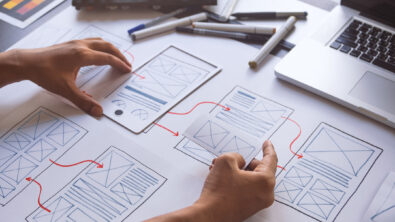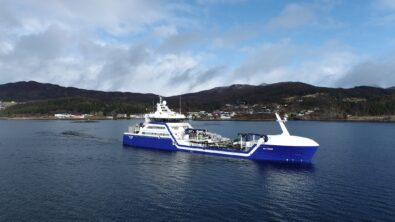Autonomous car interior options and custom travel experiences

The autonomous car will not only change our mode of transportation, but also the travel experience itself, based on the interior environment of a vehicle. The interior will no longer be defined by traditional interior elements such as leather seats, a sunroof or “premium trim.” Instead, the way we think of interiors will be completely different as we reach a new paradigm of unlimited possibilities in what it means to travel in a car.
While traveling you may want to be in an office, a living room, kitchen or a bedroom. Sure you can watch a movie (of course surround view on all windshields), but maybe you prefer to play a game of chess with a holographic chess champion or get in a few minutes of yoga.
In exploring the diverse nature of future car travel experiences, I recently spoke with Paige Kassalen, the future mobility market analyst at Covestro, a manufacturer of high-tech polymer materials, to learn what she and Covestro are doing to prepare for this future.
In the first part of our conversation, we talked about how her work with the historic Solar Impulse 2 aircraft prepared her to work with a company redefining travel by car, as well as the biggest challenges the auto industry faces with these cars. Here, we discuss the nature, scope and varieties of experiences the future car could offer, how different types of consumers will benefit from these varieties and some ways to achieve car travel experience customization.
Edward Bernardon: What do you think users will want in the future from these car interiors?
Paige Kassalen: I’m constantly trying to ask myself this question, and it’s something that is especially unique about this space. It’s not about what I want, it’s not about what you want or what anybody wants: it’s about the individual user.
Autonomous vehicles and ride sharing will provide mobility solutions for everyone. We also have to consider vehicles for people that might be disabled, or people that are elderly and need to get to and from the hospital. These types of scenarios are a consideration each day at Covestro.
We created six interior design themes of the future based on trends that we’re seeing, and I think this is an interesting way to do it because we didn’t necessarily think, “Okay, where do our materials go into vehicles today?” We started broad, and we thought, “Okay, what are some things that are changing?”
In this age of more connected devices; people are living longer and choosing to stay in their homes. How will this change what the vehicle interiors look like? One of the designs that we have we call the “premium hockey parent.” That’s because when you Google “autonomous vehicles” you usually get an image of a businessman going to work, working on his laptop and trying to get some extra hours in before he goes to the office.
However, mobility solutions of the future are going to impact much more than just somebody working. What are parents going to want in the future for getting their kids to and from the hockey rink or the soccer field safely?

Edward Bernardon: Like you stated, you could look at this problem and say, “Let’s wait for the car manufacturers to tell us what materials they need.” But, what you’ve done is said, “Let’s just think about what kind of cars or experiences people are going to want.” I think you called it the premium hockey parent car, right?
Give us a range of these types of experiences. If someone were to come to you and say, “How is this future world ―these experiences you’re talking about ― how are they going to change my life?” What’s the range of things in our lives that it might touch? You gave example of bringing children to school or to a hockey match. What part of our lives will these changes in car interiors touch? How is it going to make our lives better?
Paige Kassalen: That would be mobility on demand, especially in a scenario where you can hail a shared vehicle. This is something that’s going to dramatically change our experience. We have our cellphones on us every day, and can access the Internet and FaceTime somebody that’s in China, or another part of the world. A car might become a similar type of extension.
An idea that Covestro has explored pertains to your cell phone. For example, an iPhone, Samsung or any smartphone today is just an electric rectangle. They’re not very customizable, or different from each other. You wouldn’t differentiate much between each of the phones, except when you actually click on someone’s phone and view the screen, you see the various apps lined up. That’s the customization for that person.
We’re seeing that same concept in future cars which could be very much like the phone, in that it’s customizable. The vehicle could potentially be just a square box, and the various items of the interior could be customizable to that person.
One of the endeavors for Covestro is with our polycarbonate’s business. Polycarbonate can enable ambient lighting that can change the mood differently from person to person, or experience to experience.
We’re concentrating on your experience. For example, if you’re on your way to work and just waking up, or want to be relaxed, you could choose more of a meditation atmosphere. Then, when you’re going out to dinner with your family, it could turn into more of a nighttime experience.
Small things that people have been talking about are changing this customization. We have found through Covestro’s solutions, like ambient lighting, products can significantly influence that future.
This concludes part two of our series on autonomous vehicle interiors, a discussion with Paige Kassalen, of Covestro. In part three, we’ll continue discussing interiors and the role materials will play in the future car.
About the author
Edward Bernardon is vice president of strategic automotive initiatives for the Specialized Engineering Software business segment of Siemens PLM Software, a business unit of the Siemens Industry Automation Division. Bernardon joined the company when Siemens acquired Vistagy, Inc. in December, 2011. During his 17 year tenure with Vistagy, Bernardon assumed the roles of vice president of sales, and later business development for all specialized engineering software products. Prior to Vistagy, Bernardon directed the Automation and Design Technology Group at the Charles Stark Draper Laboratory, formerly the Massachusetts Institute of Technology (MIT) Instrumentation Laboratory, which developed new manufacturing processes, automated equipment and complementary design software tools. Bernardon received an engineering degree in mechanical engineering from Purdue University, and later received an M.S. from the Massachusetts Institute of Technology and an MBA from Butler University. He also holds numerous patents in the area of automated manufacturing systems, robotics and laser technologies.


